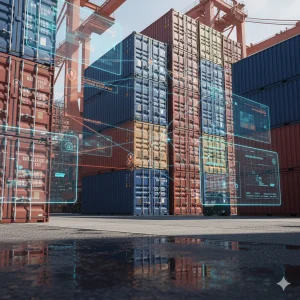The fintech industry isn’t slowing down, and neither is financial crime.
As digital payment platforms, challenger banks, lending apps, and crypto startups scale globally, they are also facing mounting expectations from regulators and investors to demonstrate that their compliance programs can grow at the same pace as their user base.
And that’s where things get tricky!
In early-stage fintech, agility is everything. But in regulated environments, speed without control can be a liability. Missed red flags. Poor audit trails. Delayed onboarding.
So, how do high-growth fintechs strike the right balance?
Here’s how modern teams are building leaner and smarter AML teams, and avoiding the cost of retroactive risk control.
Fast Growth. Thin Defenses
Start-ups are built for speed. But in fintech, that speed often comes at the cost of structure, especially when growth outpaces governance. When you’re onboarding thousands of users daily, entering new markets, or integrating payment platforms across regions, compliance risks multiply quickly.
And yet, compliance is often deprioritized in the early stages, not out of negligence, but because teams are stretched thin and focused on delivering products and services. This leads to risk gaps that widen with every new user and feature pushed into production.
Here are some of the most common early-warning signs:
- Manual KYC checks start slowing onboarding, turning what should be a seamless experience into a customer drop-off point.
- False positives flood review queues, forcing analysts to chase non-issues and miss high-risk activity.
- Transaction anomalies are flagged inconsistently, depending on which analyst is available or which rule is triggered.
- Audit preparations get reactive, relying on spreadsheets and scattered records to answer basic regulatory queries.
- Regulators start asking questions your team isn’t operationally ready to answer, such as ‘how risk is scored’ and ‘how alerts are triaged’.
Most of the compliance pain fintechs experience at scale stems from short-term workarounds, systems that were never designed to scale in the first place.
What Fintechs Need from AML in 2025
Compliance for fintech isn’t about building a 30-person risk team. It’s about embedding intelligence into your infrastructure so that compliance scales with your growth.
Some key components of a robust AML system include:
Real-Time, Risk-Based Onboarding
Not every customer carries the same risk, and your onboarding process shouldn’t treat them as if they do. Modern fintechs are moving beyond rigid KYC flows by implementing dynamic, risk-based onboarding models. These models apply deeper scrutiny to high-risk users (e.g., foreign nationals, high-value transfers, and complex structures) while allowing low-risk users to move through verification faster with automated checks.
AI-Driven Transaction Monitoring
With AI-powered, context-aware transaction monitoring, fintechs can detect unusual patterns in real-time, even when transactions appear individually benign. By establishing behavioral baselines and analyzing deviations at the account level, you surface high-risk behavior as it unfolds, reducing time-to-detection and improving alert quality.
Integrated Adverse Media & Watchlist Screening
Relying on outdated watchlists or partial data isn’t just risky, it’s non-compliant in many jurisdictions. Fintechs scaling globally need real-time screening against PEPs, RCAs, sanctions lists, and adverse media sources, all integrated into onboarding and ongoing monitoring workflows. This ensures that every customer profile is continuously evaluated as new risks emerge.
Compliance as a Product Feature
Today, compliance isn’t just about staying out of trouble. It’s a signal of trust. Investors, partners, regulators, and even end users want to see that fintech can grow and govern simultaneously. Fintechs that embed compliance in their product workflows, interfaces, and infrastructure often move faster, close deals quicker, and stand out during due diligence.
The Regulatory Landscape: What Fintechs Can Expect
Whether you are in the US, UK, or EU, regulators are rapidly tightening the reins on digital-first institutions. If you operate cross-border or handle high-volume transactions, you’ll need to align with:
- FCA & PRA (UK): Emphasis on continuous due diligence, KYC automation, and anti-fraud safeguards
- FinCEN & OCC (US): Requirements around beneficial ownership, crypto risk, and suspicious activity reporting
- 6AMLD & EBA Guidelines (EU): Increased penalties for non-compliance and focus on operational resilience
The trend is clear. Regulators are expecting regulators to look and act like mature financial institutions, without the benefit of legacy infrastructure.
Building AML into Your Infrastructure
The mistake many fintechs make is treating compliance like a parallel system. But the smarter move? Design it into your infrastructure from the start. Such as:
Using customized risk scoring across onboarding, transactions, and reviews
API-first screening embedded into user flows and payment layers
Cross-functional collaboration between product, risk, and engineering teams
Centralized case management that works for small teams
Modern AML solutions aren’t just designed for banks; they are built for scale, and that’s exactly what fintechs need.
How IDYC360 Helps Fintech Stay Ahead of the Curve
At IDYC360, we help fintechs of all sizes stay compliant without slowing growth. Our platform offers:
- Accelerated onboarding with dynamic risk-based KYC
- AI-driven transaction monitoring with automated and explainable alerts
- Global risk intelligence covering sanctions, PEPs, RCAs, global watchlists, and adverse media
- Instant alerting and audit-ready trails for every decision
- Seamless API integration for dev teams building fast and scaling globally.
Whether you’re expanding to new regions, preparing for licensing, or tightening controls for your next funding round, IDYC360 grows with you.
Final Thoughts
For fintechs, growth is the goal. But in 2025, compliance is part of the growth equation, not the cost of it. The smartest teams are using AML not just to stay compliant, but to stay competitive.
This proves to investors, partners, and regulators that they can scale responsibly, with control integrated into every layer of their stack.
The right systems don’t just help you pass audits; they help you move faster, onboard better, and stay ahead of the risk, by design.
Ready to Stay
Compliant—Without Slowing Down?
Move at crypto speed without losing sight of your regulatory obligations.
With IDYC360, you can scale securely, onboard instantly, and monitor risk in real time—without the friction.











